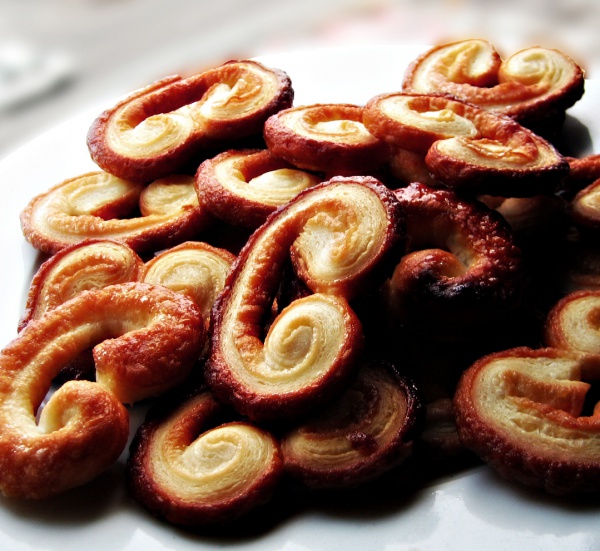Facts About Palmier
A palmier, also known by charming names like pig's ear, palm heart, or elephant ear, is a delightful French pastry that resembles a palm leaf or butterfly. This treat, also referred to as palm leaves, cœur de France, French hearts, shoe soles, or glasses, was first created in the early 20th century.
Palmiers are crafted from puff pastry, a type of laminated dough similar to croissant dough but without yeast. This dough is made by layering dough and butter, rolling, and folding it to create a flaky texture. To make palmiers, the dough is rolled out, sprinkled with sugar, and then rolled from both sides to meet in the center. The resulting roll is sliced into ¼-inch pieces and baked, often with an extra coating of sugar for added sweetness.
Different cultures have their own versions of palmiers. In Puerto Rico, they are topped with honey. In Mexico and other Latin American countries, they are known as orejas. In Chinese cuisine, they are called butterfly pastries. The Greeks refer to them as little glasses (γυαλάκια), while in Germany, they are known as Schweineohren. In Switzerland, they are called Prussiens or cœur de France, and in Catalonia and Valencia, they go by the names ulleres or palmeras. In Spain, palmeras can be found topped with coconut or chocolate. Japan has its own popular version called Genji Pie, which has been enjoyed since 1965. Additionally, an arlette is a cinnamon-flavored variation of the palmier.
Whether you call them palmiers, pig's ears, or butterfly pastries, these flaky, sugary treats are a delightful indulgence enjoyed worldwide.
